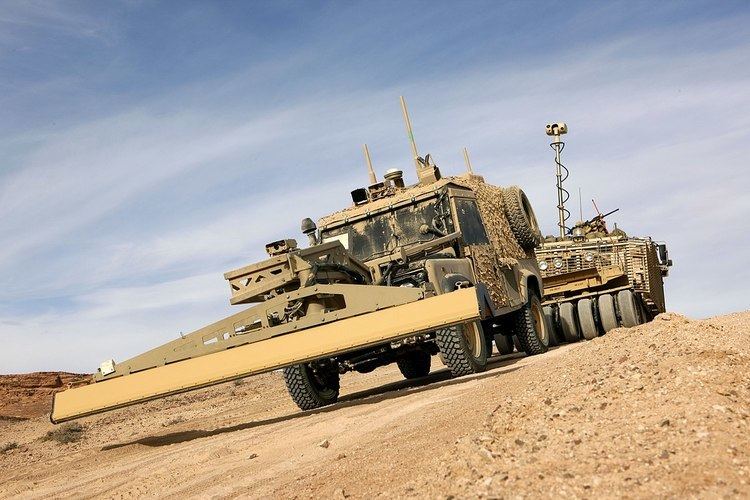 | ||
Route clearance is a routine part of counter-IED efforts performed by military forces around the world. The purpose of route clearance is to secure an important route and render it for safe transport. This mission relies on the use of Sapper and EOD forces to accomplish this task. Although mines have been used in warfare for years, the rise of IEDs in current conflicts has led to the development of the current route clearance doctrine.
Contents
A typical route clearance package, or RCP, consists of a sapper platoon, an EOD team, at least one medic, and a HEMTT wrecker staffed by a team of mechanics. RCPs are clearly recognized by troops as they use the Chubby mine detector, more commonly known as the Husky, as well as the Buffalo (mine protected vehicle). While these vehicles provide superb protection and are critical in finding and destroying IEDs they are unarmed, so the rest of the platoon must protect them while in operation. Moreover, the loss of the Buffalo or the Husky vehicles would greatly reduce the counter-IED potential of the RCP as it would no longer possess the capability to locate or remove IEDs with high effectively resorting to secondary options such as using remote controlled vehicles, using standard MRAPs equipped with digging tools in place of the Buffalo, and dismounted foot patrols to locate the trigger points in known danger areas.
Afghanistan
US forces entered the war in Afghanistan in 2001. Although there was fierce fighting such as the Battle of Tora Bora and Operation Anaconda, the IED threat remained generally low until later in the war. Afghanistan is a rural country with rough terrain, most of the roads are unimproved and due to the abundance of rivers many culverts are present. Because of this IED threats are numerous. Typically tactics include placing high yield IEDs weighing several hundred pounds deep underground causing massive damage. However modern MRAP vehicles are capable of withholding most blasts. Another tactic is placing small IEDs at choke points, the vehicle becomes disabled and the passing troops are ambushed. Due to the decade long Soviet war in Afghanistan many Soviet mines are still used by Taliban fighters to make IEDs. RCPs are not designated units and are normally brought together from existing Combat Engineer and EOD units. They are then deployed to areas of need. Not all parts of Afghanistan are equally covered by RCPs, for example the remote FOB Salerno near Khost housed RCP7 and RCP9, which were composed of National Guard sappers and active duty EOD personnel, on the other hand Gradez had no dedicated RCP units and relied on nearby units from FOB Salerno, FOB Shank, and Orgun-E.
2003 Invasion of Iraq
Unlike Afghanistan threats of IEDs evolved almost instantly after the invasion. Indeed the MRAP vehicles were largely developed for the Iraq war even though the War in Afghanistan was already several years old by the time first troops stepped on Iraqi soil. Iraq was much more urban, Iraq also had many paved highways. The insurgents in Iraq relied much more on EFPs, contrary in Afghanistan EFPs never became prevalent. An EFP is capable of slicing through several inches of armor by forming a projected missile, once the armor is penetrated the EFP often kills the crew due to the heat associated with the blast.
